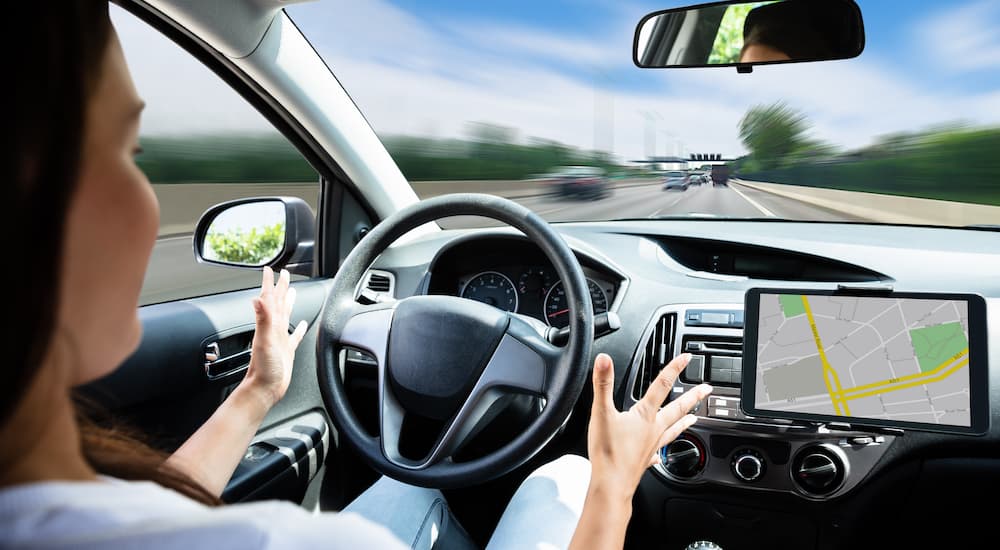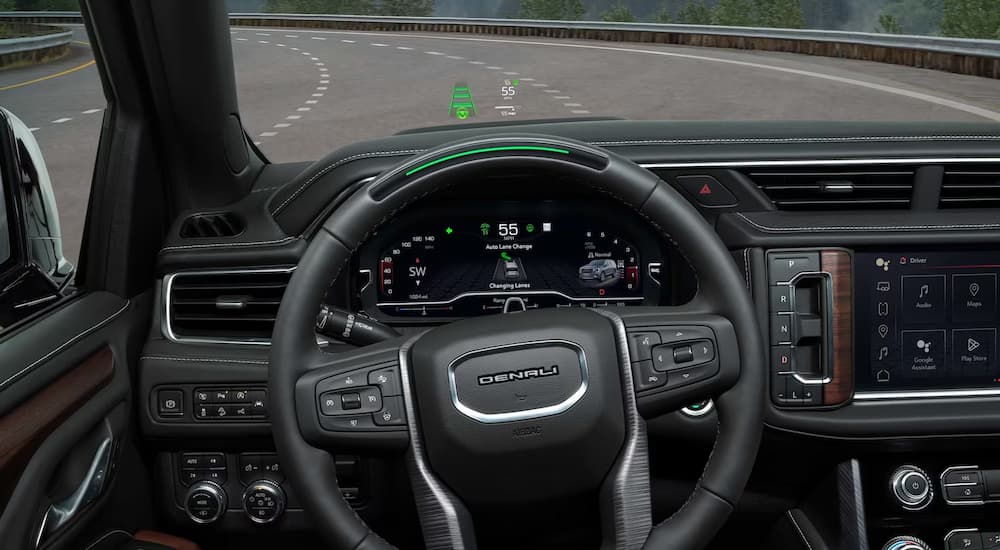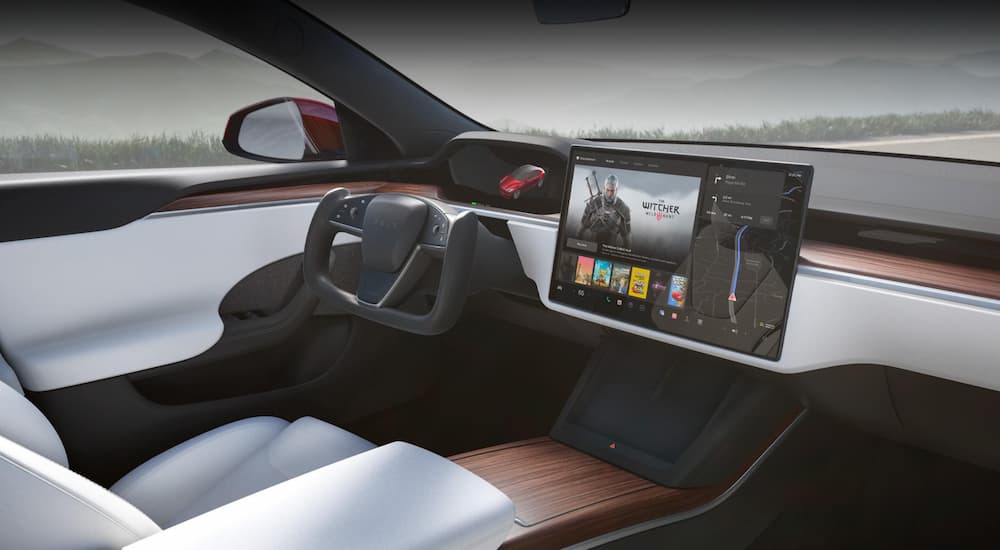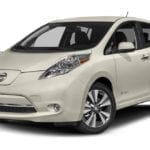Hands-free driving has been a feature in many futuristic movies dating back through the decades. We all remember the scene in I, Robot where Detective Spooner turns off his vehicle’s hands-free driving capabilities, much to the dismay of the general public, because he doesn’t trust robotic technology. Although today’s technological advancements aren’t really in-line with Hollywood’s portrayal of where the industry should be at this point in time, semi-autonomous driving capabilities do exist, and they’re making headlines.
Elon Musk has been in the news recently due to his decision to allow Tesla drivers to engage Full Self-Driving mode, which will place their lives (and others’) in the hands of a machine. Detective Spooner would not approve of this, I’m sure. In response, the National Highway Traffic Safety Administration (NHTSA) has intervened, requiring Musk to further expand on this idea since it’s been reported that a number of Tesla vehicles have been involved in crashes while utilizing the brand’s semi-autonomous driving features.
You’ve probably heard the story about the driver who had his Tesla drive him home after he had a few too many alcoholic beverages, which may have prompted you to worry about how these capabilities are actually meant to work. After all, aren’t there safety protocols in place that prohibit you from taking a snooze in the backseat while you place your life (and others’) in the hands of a machine? There are…unfortunately, as with anything, drivers have already found their way around these safety protocols. What does this mean for the future of semi-autonomous driving? Is it safe, or should robots be banned from the road?
What Is Semi-Autonomous Driving?
In recent years, car manufacturers have been testing the waters with how much control they can give their machines. This has led to the development of semi-autonomous driving capabilities that utilize sensors and computers to accelerate, brake, and steer a vehicle to its destination. However, unlike experimental fully-autonomous driving systems, the semi-autonomous driving features available today require you to be in the driver’s seat with your eyes focused on the road, although you don’t always have to keep your hands on the wheel. Some semi-autonomous options, such as GM’s Super Cruise and Ford’s Blue Cruise, have introduced a special camera to monitor the driver’s focus on the road, which will cause the system to disengage if the driver isn’t paying ample attention. Others, like Tesla’s Full Self-Driving, do require your hand to remain on the steering wheel.
However, manufacturers and drivers want to go further. Elon Musk took to Twitter recently, notifying Tesla drivers that soon, they should be able to completely turn off the “steering wheel nag” feature for Full Self-Driving. This has become the talk of the industry, prompting many to wonder if it is really a good idea. Don’t get me wrong—I love my robot vacuum. It cleans my floors so that I don’t have to, but would I trust it to do anything else? Maybe—it would be great if it would also clean the rest of my house, but that’s about it.
The Benefits and Risks of Semi-Autonomous Driving
Semi-autonomous driving, when used properly, allows drivers to relax a bit on long drives while their vehicles take care of basic maneuvers. It’s meant as a convenient feature to enhance the experience on the road, but the driver always remains in control of the vehicle. A semi-autonomous driving mode can turn off at any time and is not designed to respond correctly in unusual situations or emergencies. Unfortunately, not every driver is utilizing these features properly, which has placed this capability in a negative light. It may not be that the technology isn’t working as it should, but rather that drivers aren’t using it as intended.
The biggest thing to remember about technology is that your vehicle, robot vacuum cleaner, Alexa smart home device, or anything else you own is just a machine. They work on pre-computed protocols and sequences, and they’re not meant to think freely on their own. I once watched my robot vacuum repeatedly run into a wall until it finally made the necessary adjustments. Semi-autonomous driving capabilities are merely a driving aid like cruise control and require human oversight. They allow drivers to concentrate more clearly on what’s going on around them while their vehicles take care of simple sequences pre-programmed into their databases, allowing the driver to intervene when necessary. Ultimately, the driver is still in charge of the whole operation.
Going Completely Hands-Free: Are We Ready for It?
When you take important tasks like navigating through traffic, avoiding obstacles on the road, and providing a safe ride for you, your passengers, and everyone traveling around you and place them into the hands of a machine, it gets a little tricky. Sometimes, you need to make split-second decisions when a vehicle comes out of nowhere or when the road conditions change without warning. Is your car able to handle this safely and effectively? Experts say no. According to the NHTSA, Tesla is the center of an ongoing investigation of 14 incidents where its cars have crashed into emergency vehicles while driving in Autopilot mode (which is a level down from Tesla’s headline-grabbing Full Self-Driving mode). The brand has also been the focus of a fatal accident in 2018 involving this feature, prompting an intense review of Tesla’s monitoring of this type of technology.
This begs the question, are these incidents driver error or a defect in the technology? Unfortunately, there isn’t a good answer yet. Every automaker has included safeguards to prevent improper use of semi-autonomous driving capabilities, but none of them are fool-proof. The industry simply hasn’t quite gotten this level of technology down yet. You can argue that there are plenty of accidents where drivers who aren’t using any semi-autonomous driving technology fail to pay attention. This is true; however, adding another piece to the puzzle by allowing a brainless machine to pilot you to your destination may be pushing it over the limit at this point in time.
Semi-Autonomous Driving: Do the Risks Outweigh the Benefits?
Personally, I believe that the benefits of semi-autonomous driving outweigh the risks––but only if you utilize the systems properly. This means remaining in the driver’s seat, focusing on the road, and being ready to intervene when needed. This does not mean bypassing the safeguards in your semi-autonomous system and going to sleep or watching a movie on your phone. Are we ready for fully hands-free driving capabilities? Absolutely not, and although Elon Musk likes to get on Twitter and gets people’s hopes up, I don’t think this is going to be happening anytime soon.
Should you be scared of semi-autonomous driving? I don’t think so. The biggest advantage of having this feature available in your car is the fact that you have the authority to engage or disengage it. You also have the authority to override the system and take control again, but you have to be paying attention to do so in time. This is the key. When used properly, I think that semi-autonomous driving capabilities can really help create a future of travel that’s safer and more enjoyable, paving the way for more advanced opportunities to hit the market in due time.






